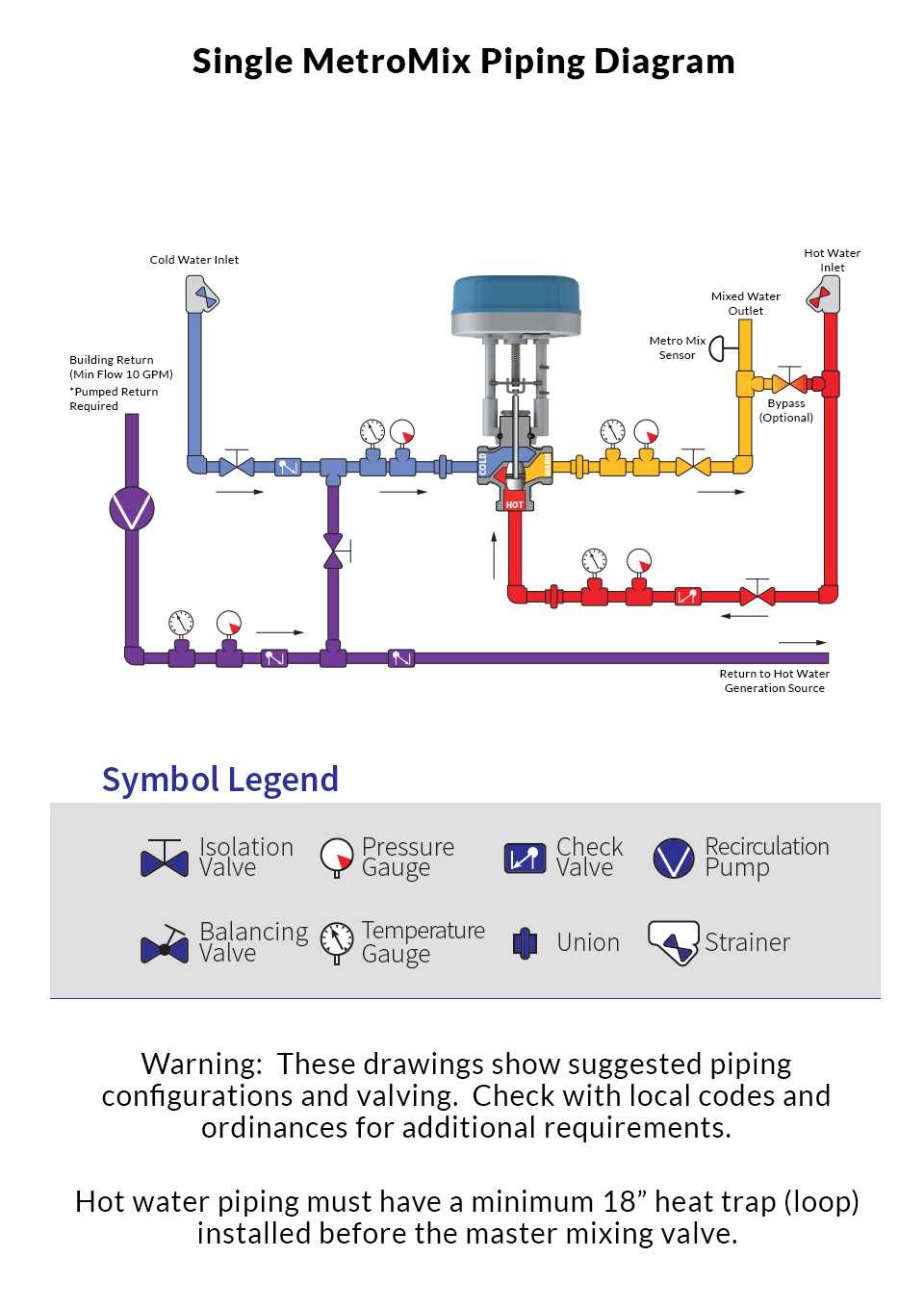
Hot water recirculation is a system that helps to conserve water and energy in residential and commercial buildings. This system ensures that hot water is readily available at all fixtures, eliminating the need to wait for the water to heat up. A hot water recirculation piping diagram is a visual representation of how the piping should be installed in order to achieve optimal performance.
The diagram typically includes a pump, a circulation line, and a return line. The pump is responsible for circulating the hot water from the water heater to the fixtures and back to the water heater. The circulation line connects the water heater to the fixtures, while the return line connects the fixtures back to the water heater. This continuous flow of hot water in a closed loop system ensures that hot water is available immediately when needed.
Hot water recirculation systems can be either demand-controlled or timer-controlled. Demand-controlled systems use sensors or motion detectors to detect when hot water is needed and activate the pump accordingly. Timer-controlled systems are programmed to circulate hot water at specific times of the day, usually during peak usage periods. Both types of systems help to reduce water wastage and improve energy efficiency.
What is a hot water recirculation system and why is it important?
A hot water recirculation system is a plumbing system that helps circulate hot water throughout a building, ensuring that hot water is readily available at all fixtures. It consists of a pump, pipes, and valves that work together to recirculate the hot water from the water heater to the fixtures and back again.
This system is important because it provides several benefits. Firstly, it eliminates the need to wait for hot water at the tap, which can save valuable time and reduce water waste. With a hot water recirculation system, hot water is instantly available to the user, improving convenience and comfort.
Secondly, a hot water recirculation system helps conserve energy. By continuously circulating the hot water through the pipes, it reduces the amount of heat lost during the standby period, when hot water is not being used. This means that less energy is required to keep the water hot, resulting in lower energy bills and increased energy efficiency.
Furthermore, the recirculation system helps maintain consistent water temperatures throughout the building. The pipes are insulated to prevent heat loss, and the system can be equipped with temperature sensors and valves to regulate the water temperature. This ensures that users do not experience sudden shifts in water temperature while using the fixtures.
In summary, a hot water recirculation system is an important component of a building’s plumbing system. It provides instant hot water, conserves energy, and maintains consistent water temperatures, offering convenience, efficiency, and comfort to the users.
Benefits of using a hot water recirculation system
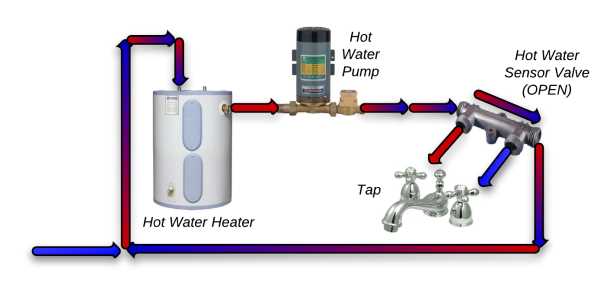
Hot water recirculation systems offer several benefits for homeowners and businesses. These systems are designed to keep hot water readily available at any faucet or fixture in the building, eliminating the need to wait for hot water or waste water while it heats up. Here are some key advantages of using a hot water recirculation system:
- Convenience: With a hot water recirculation system, hot water is instantly available at any faucet or fixture in the building. This means no more waiting for water to heat up, providing convenience and saving time.
- Energy savings: By continuously circulating hot water through the plumbing system, a recirculation system helps to minimize the amount of water that is wasted while waiting for hot water. This can lead to significant energy savings over time, as less water needs to be heated up.
- Water savings: A hot water recirculation system can also help to reduce water consumption. Instead of letting the water run until it becomes hot, the system circulates hot water to the desired fixtures, reducing the amount of cold water that is wasted.
- Comfort and convenience: Having access to hot water immediately offers enhanced comfort and convenience. Whether you need hot water for washing dishes, taking a shower, or doing laundry, a recirculation system ensures that hot water is readily available.
Overall, a hot water recirculation system can provide both energy and water savings, while offering increased comfort and convenience for users. Whether for residential or commercial use, these systems are an efficient and practical solution to ensure instant access to hot water.
Components of a hot water recirculation system
A hot water recirculation system is designed to provide instant hot water at any faucet or fixture in a building. The system typically includes several key components that work together to ensure hot water is readily available when needed.
Pump
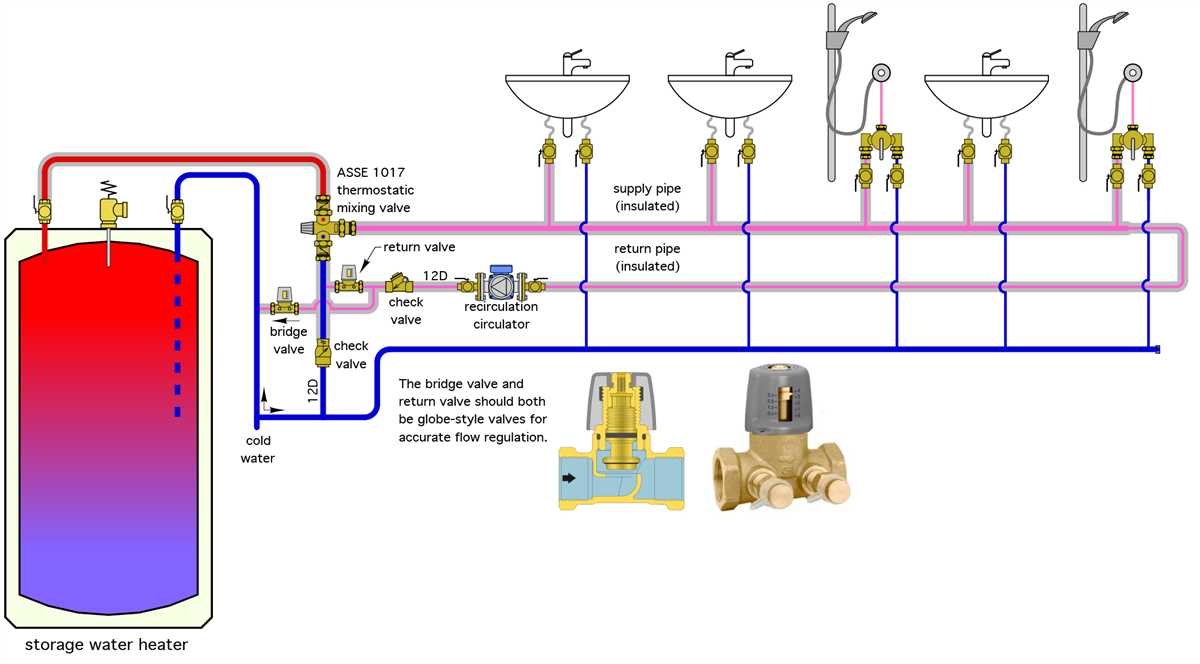
The pump is perhaps the most important component of a hot water recirculation system. It is responsible for circulating hot water from the water heater to the various fixtures and back again. The pump is usually installed near the water heater and is controlled by a timer or a thermostat. It can be either a dedicated recirculation pump or a pump integrated with the water heater.
Piping
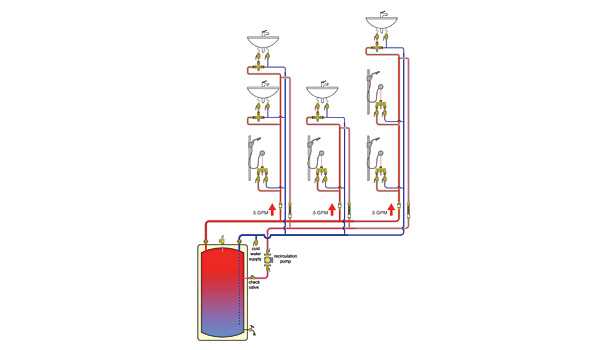
Proper piping is essential for an efficient hot water recirculation system. The piping carries hot water from the water heater to the different fixtures and returns the cooled water back to the water heater. The pipes should be properly insulated to minimize heat loss and reduce energy consumption. Piping can be arranged in different configurations, such as a loop, a branched system, or a home run system, depending on the specific needs of the building.
Check valve
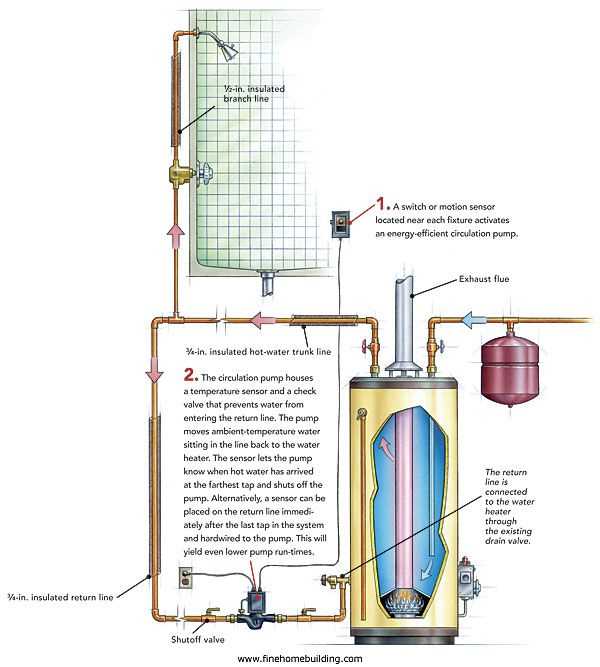
A check valve is installed in the recirculation line to prevent backflow of cold water into the hot water line. This ensures that hot water is always available at the fixtures and prevents the need for re-heating the water. The check valve is typically located near the water heater and allows water to flow in one direction only.
Thermostat
The thermostat is used to control the temperature of the hot water in the recirculation system. It ensures that the water is kept at the desired temperature and prevents overheating. The thermostat can be set based on the needs of the building and can be adjusted as necessary.
Switches and controls
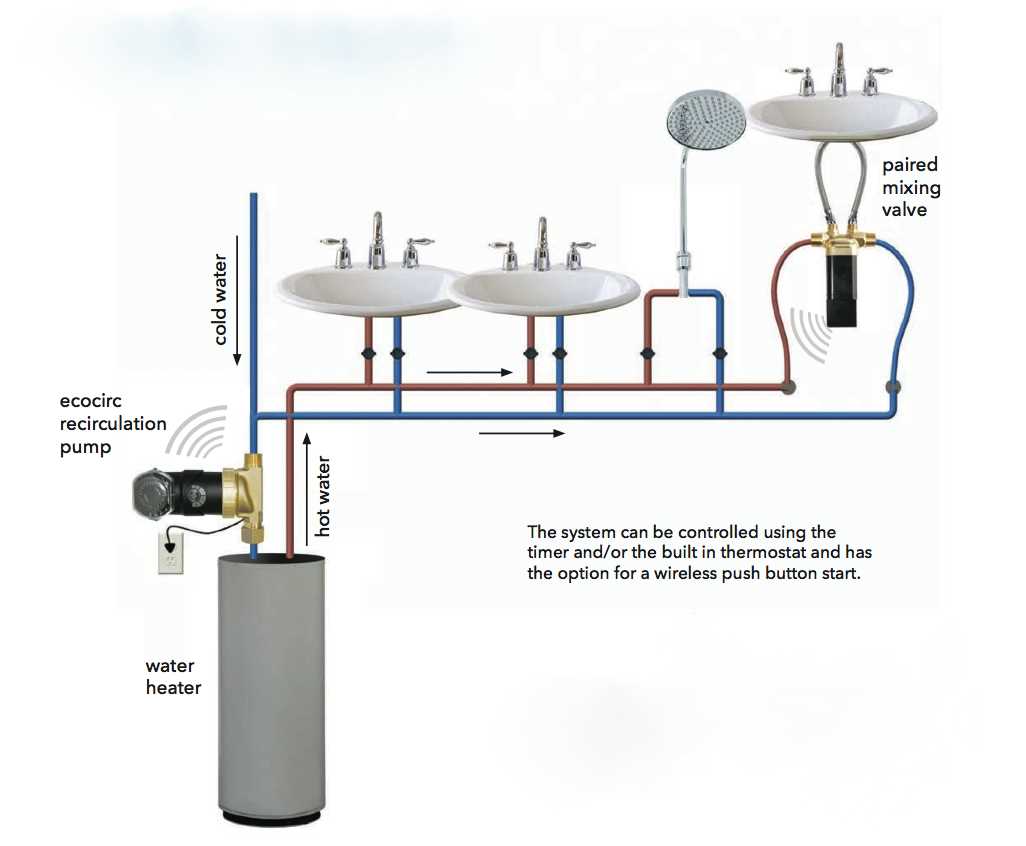
Switches and controls are used to operate and regulate the hot water recirculation system. They allow users to turn the system on or off, adjust the timer settings, and control the flow and temperature of the hot water. These switches and controls can be digital or manual, depending on the system design and user preferences.
In conclusion, a hot water recirculation system requires several components to ensure efficient and instant hot water delivery. These components include a pump, piping, check valve, thermostat, and switches and controls. When properly installed and maintained, a hot water recirculation system can provide convenience and energy savings for buildings of all sizes.
Installation and maintenance of a hot water recirculation system

Installing a hot water recirculation system in a building can provide numerous benefits, including reduced water wastage, greater convenience, and energy savings. However, it is essential to follow the correct installation and maintenance procedures to ensure the system operates efficiently and reliably.
Installation: When installing a hot water recirculation system, the first step is to determine the best location for the recirculation pump. This pump is responsible for circulating hot water from the water heater to the fixtures and back to the heater. Ideally, the pump should be installed near the water heater to minimize the distance water needs to travel.
The recirculation piping should be properly sized to ensure adequate flow and prevent pressure drops. It is crucial to avoid sharp bends or turns in the piping, as these can restrict flow and reduce system performance. Insulating the piping can also help minimize heat loss during circulation.
Maintenance: Regular maintenance is essential to keep the hot water recirculation system functioning optimally. This includes periodic inspection of the pump, checking for any leaks or malfunctions, and ensuring proper lubrication if required.
It is also important to flush and clean the recirculation pipes regularly to prevent the buildup of sediment or debris that can affect water flow and lead to clogging. This can be done by isolating the recirculation loop, draining the system, and using appropriate cleaning agents as recommended by the manufacturer.
Overall, proper installation and maintenance of a hot water recirculation system are crucial to maximize its efficiency and prolong its lifespan. Following the recommended guidelines will ensure a continuous supply of hot water and the many benefits associated with such a system.
Tips for Improving Energy Efficiency in a Hot Water Recirculation System
Efficiency is a key factor to consider when it comes to hot water recirculation systems. By implementing a few tips and strategies, you can significantly improve the energy efficiency of your system. Here are some recommendations:
1. Insulate Hot Water Pipes
One of the simplest and most effective ways to improve energy efficiency is by insulating your hot water pipes. Insulation helps to minimize heat loss during water circulation, reducing the need for the water heater to work harder to maintain the desired temperature. This can result in significant energy savings over time.
2. Use Timer or Smart Controls
Installing a timer or smart controls for your hot water recirculation system can help to improve energy efficiency. By programming the system to activate only during peak demand periods, you can avoid unnecessary operation and reduce energy consumption. This ensures that hot water is readily available when needed without running the recirculation pump constantly.
3. Optimize Pump Speed
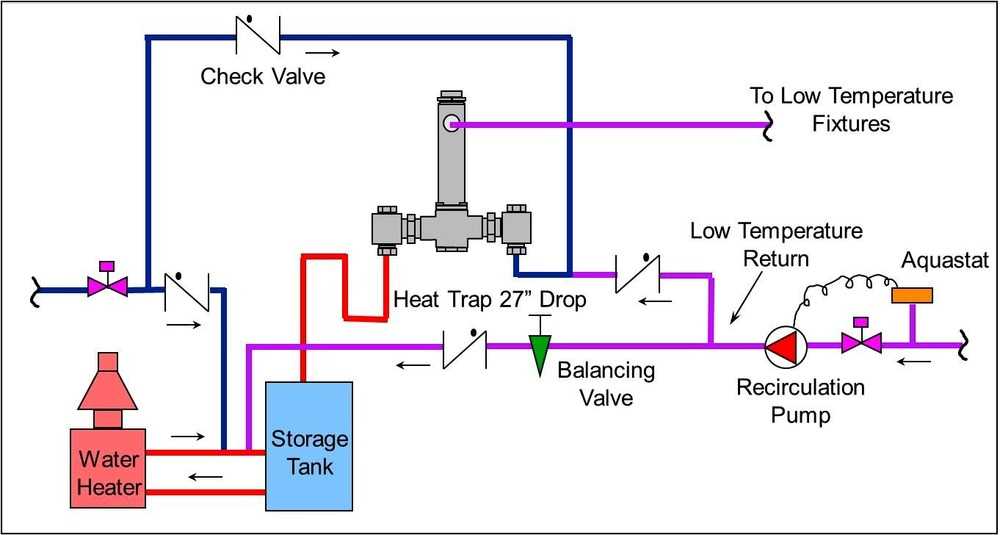
Adjusting the speed of the recirculation pump can also contribute to energy efficiency. Many modern recirculation systems allow for variable speed control, which enables you to match the pump speed to the actual demand for hot water. By reducing pump speed during periods of low demand, you can reduce energy consumption and extend the life of the pump.
4. Consider Heat Recovery Systems
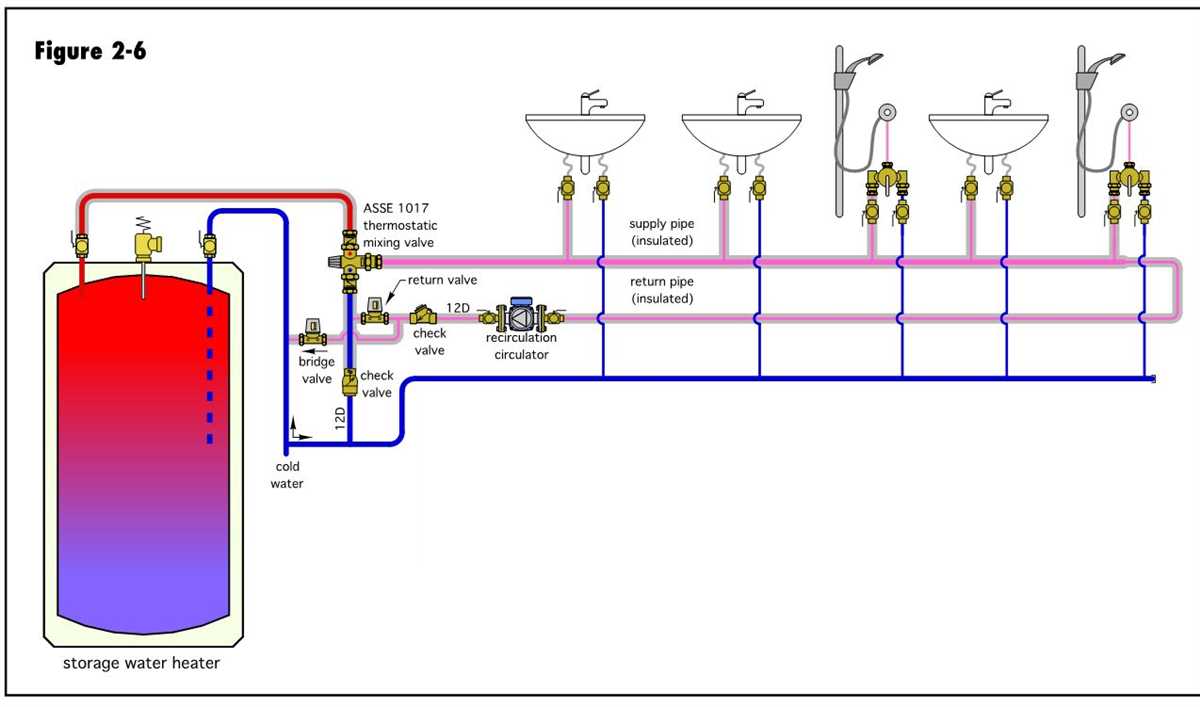
Heat recovery systems can be integrated with a hot water recirculation system to further improve energy efficiency. These systems capture and reuse the waste heat from the hot water, such as from shower drains or the water heater exhaust. By utilizing this waste heat, you can reduce the load on the water heater and decrease overall energy consumption.
By implementing these tips, you can make your hot water recirculation system more energy efficient, resulting in cost savings and reduced environmental impact. Insulating pipes, using timer or smart controls, optimizing pump speed, and considering heat recovery systems are all worthwhile investments that can help improve the overall performance of your hot water recirculation system. Remember, even small changes can make a big difference when it comes to energy efficiency.